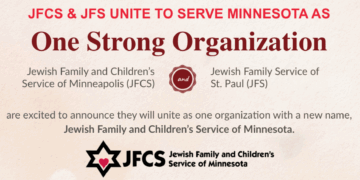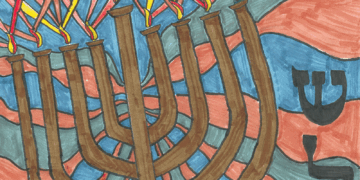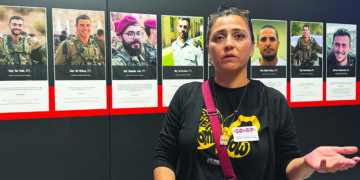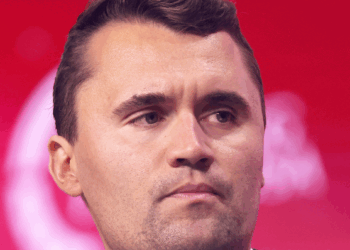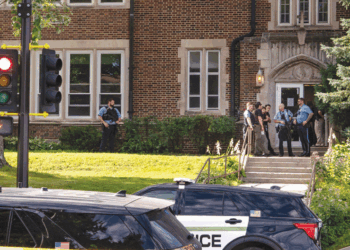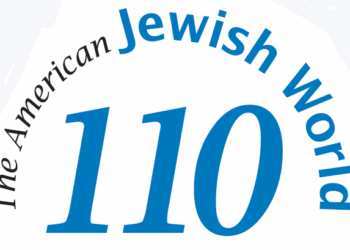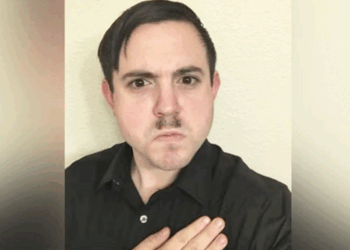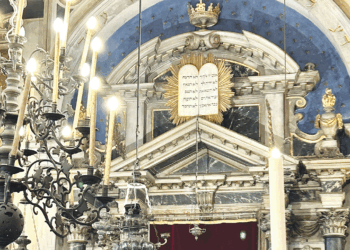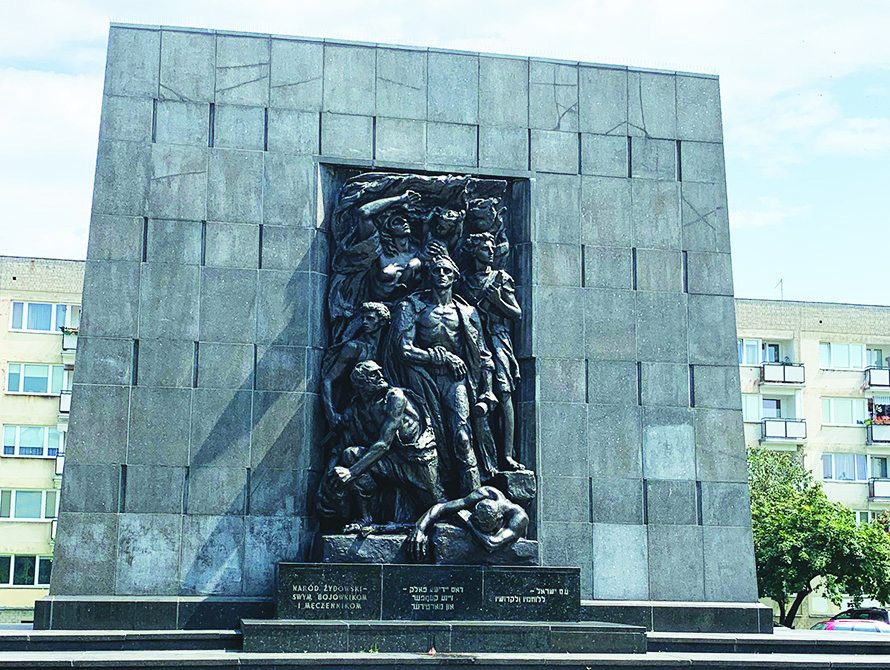
Photos and Story by MORDECAI SPECKTOR
WARSAW, Poland — In order to catch our 7 a.m. flight from Copenhagen to Warsaw, we woke up at 4:30 a.m. and met our taxi to the airport. In July, my wife, Maj-Britt Syse, and I were visiting our son Max, 32, an engineering student at the Technical University of Denmark, and the three of us traveled together to Poland.
On arrival at Frédéric Chopin Airport, we were met by Jakub Lysiak, general tour manager for Taube Jewish Heritage Tours. Since our rental apartment wouldn’t be ready until 11 a.m., Jakub took us on a walking tour of Warsaw’s Old Town and a stop for coffee.
Traveling the Jewish World
Warsaw was reduced to rubble by Nazi troops during World War II; the Old Town was 85 percent destroyed, according to the United Nations Educational, Scientific and Cultural Organization (UNESCO). So, what we saw was a replica — a “meticulous restoration,” according to UNESCO — of the Old Town, its churches, palaces and marketplace, which stood from the 13th to the 20th century. The Old Town was reconstructed after the war, over a span of five years, and, as Jakub told us, it is now on the UNESCO World Heritage List.
Why visit Poland?
In 2018, I traveled to Prague and Budapest, my first forays in Central Europe, and wrote stories for the Jewish World. Poland, with 3.3 million Jews, in 1939, was the center of the Jewish world, and Warsaw was the center of Polish Jewry. In the Shoah, 90 percent of Polish Jews were murdered. The Third Reich built its extermination camps in Poland; the country’s place names evoke feelings of dread now: Chelmno, Treblinka, Sobibor, Belzec, Majdanek, Auschwitz-Birkenau.
After the war, Poland came under Soviet domination and the Jewish community suffered further repression; in 1968, thousands of Jews were declared enemies of the state and forced to leave Poland. We were told that Jews affiliated with the official Jewish community in the country number around 5,000. (Although about 80 percent of American Jews can trace their ancestry to Poland, my grandparents came to America from Ukraine and Moldavia; perhaps, in the misty past, some of my unknown forebears migrated eastward from Poland.)
And the emotionally fraught past is still provoking controversy in Poland, as the right-wing government refuses to acknowledge Holocaust property restitution claims and has passed legislation to stifle historical research that implicates Poles in crimes against Polish Jews during World War II. So, to gain a deeper understanding of our global Jewish community, I decided to visit Poland for the first time.
I’m no expert on the history of Poland or Polish Jews, but I received a crash course, touring Warsaw and nearby Łódź over July 9-12. We were guided through museums, ghettos and the sprawling Łódź Jewish Cemetery by young Polish scholars. We attended Friday night services at Synagogue Ec Chaim, a Reform congregation housed on the fourth floor (elevator out of service) of a downtown office building. On our own, we explored Warsaw, going for a Shabbat shpatzir, a stroll, along the Vistula River and through lovely Łazienki Park, the city’s largest park where a music festival was taking place. On two consecutive nights I attended concerts by top-flight jazz bands from the U.S., part of the Warsaw Summer Jazz Days festival.
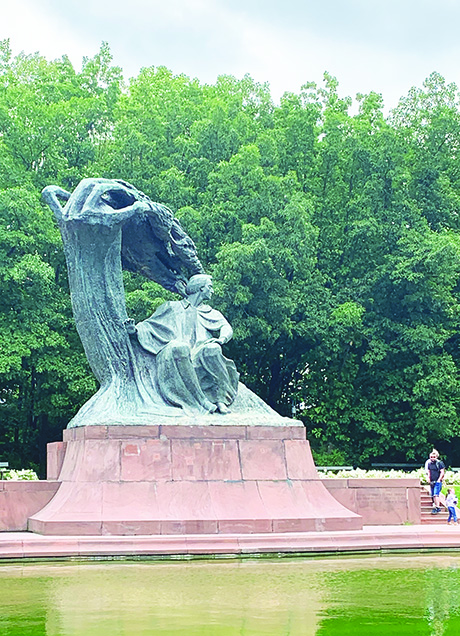
A long Friday
After stowing our luggage in the apartment we rented on John Paul II Avenue, a main drag through Warsaw, we met Helise Lieberman, director of the Taube Center for the Renewal of Jewish Life in Poland, at the nearby Jaś and Malgosia café — on the corner of Jana Pawła II and Mordechaja Anielewicza, which is named in honor of the leader of the Jewish Fighting Organization in the Warsaw Ghetto. Helise was accompanied by Aleksandra Makuch, the Taube group’s assistant director.
After a brief chat, we all walked to the POLIN Museum of the History of Polish Jews, a huge edifice located in Muranów, Warsaw’s prewar Jewish neighborhood. Actually, the spacious museum, which faces the Monument to the Ghetto Heroes, is built atop the rubble of the destroyed Warsaw ghetto.
We had lunch in the museum cafeteria and then commenced our private guided tour. The POLIN Museum traces the 1,000-year history of Polish Jews, going back to Ibrahim ibn Yakub, possibly a merchant and physician, who traveled in the 10th century from Islamic Andalusia, in what is now Spain, across Europe to the place he called the “Land of Miezko,” as Poland, which was ruled by Miezko, a Polish duke, was then known.
Kasia Jankowska, our enthusiastic and knowledgeable young guide and an educational specialist at the POLIN Museum, led us through the interactive displays of the core exhibit. The private guided tour took a good two hours and, at the beginning, I was occasionally falling asleep on my feet — again, we were up at 4:30 a.m. in Copenhagen. As the tour progressed, I got a second wind.
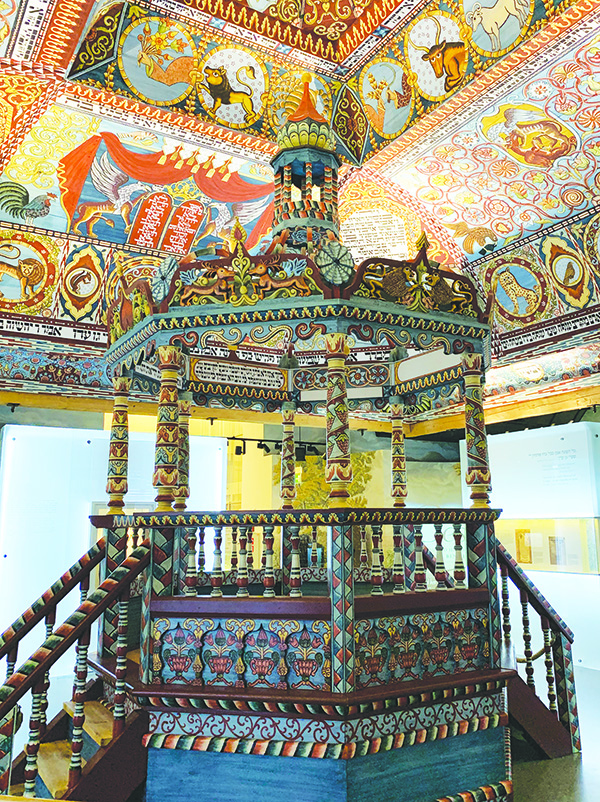
“In the course of more than 500 years, Jewish presence in Polish lands grew from a few Jewish travelers to 14 Jewish settlements by 1400,” according to POLIN: 1,000-Year History of Polish Jews, a guide edited by Barbara Kirshenblatt-Gimblett, the museum’s current director. “By 1507, Jews were living in more than a hundred places and had formed Jewish communities in more than half of them.” Estimates of Jewish settlers, in the early 16th century range from 5,000 to 30,000.
Of course, there’s not space in a single issue of the Jewish World to recount the ups and downs of Polish Jewry through the ages. It seemed that we moved through the 20th century quite quickly — we didn’t visit the exhibit of Tłomackie 13, headquarters of the Association of Jewish Writers and Journalists, that featured the luminaries of Yiddish culture in Warsaw. I glimpsed that exhibit as we walked down the reconstructed Jewish street — di yidishe gas — from the Second Polish Republic (1918-1939). In any case, we knew where we and the Jews of Poland were headed.
At the end of the Jewish street, museum visitors turn a corner and see artifacts about the German invasion of Poland, Sept. 1, 1939. The humiliation, marking and segregation of Polish Jews culminated in the establishment of 600 ghettos in occupied Poland. The Warsaw ghetto was the largest, with about 400,000 Jews confined within its walls. On our final day in Warsaw, we visited the Emanuel Ringelblum Jewish Historical Institute, which houses the Ringelblum Archive, a trove of documents that were secreted in metal boxes and milk cans in various Warsaw ghetto buildings. The hidden archives were retrieved after the war.
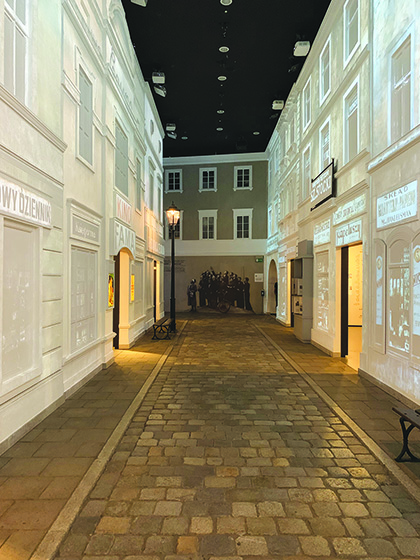
The POLIN Museum’s exhibits on the postwar years filled in some gaps in my understanding of the Polish Jewish experience.
As the guide to the museum notes: “Survivors returned to a destroyed world, symbolized here by a sea of rubble. The Germans had destroyed the ghetto and prewar Jewish neighborhood of Muranów after the Warsaw ghetto uprising in 1943. By the end of the Warsaw uprising in 1944, they had left 80 percent of Warsaw in ruins. Objects found in the rubble of the ghetto and today in the collection of the POLIN Museum appear here, together with words of Vladka Meed, ‘Nothing, absolutely nothing remains of my childhood, of my youth, not even the grave of my dead father.’”
As if the hell on earth of the Shoah was not enough, some Polish Jews returned to their hometowns and were murdered by their gentile Polish neighbors. There were pogroms and other violence against Jewish returnees. The worst case of this sort of violence was the Kielce pogrom, July 4, 1946. The mass murder in the town in southeastern Poland followed on the specious complaint of a nine-year-old non-Jewish boy who said he had been kidnapped and hidden in the basement of the Jewish Committee building. When police went to investigate the boy’s complaint, a crowd of angry Poles gathered outside the building.
According to the account on the website of the U.S. Holocaust Memorial Museum: “Polish soldiers and policemen entered the building and called upon the Jewish residents to surrender any weapons. After an unidentified individual fired a shot, officials and civilians fired upon the Jews inside the building, killing some of them. Outside, the angry crowd viciously beat Jews fleeing the shooting, or driven onto the street by the attackers, killing some of them. By day’s end, civilians, soldiers and police had killed 42 Jews and injured 40 others. Two non-Jewish Poles died as well, killed either by Jewish residents inside the building or by fellow non-Jewish Poles for offering aid to the Jewish victims.”
As vast cemetery
As mentioned at the top, the POLIN Museum sits atop the rubble of the Jewish ghetto. I don’t want to reduce 1,000 years of Polish Jewish history to the five years of the Shoah; but our visits to Warsaw and Łódź had a certain focus on ghettos and the Shoah, the cataclysm that ended a vibrant Jewish presence in Poland.
The journalist Kostek Gebert, an important figure in the renewal of Jewish life in Warsaw in the post-Communist era, illuminated the strange shape of Warsaw’s street grid in an essay published in Jewish Space in Contemporary Poland (Indiana University Press), edited by Erica Lehrer and Michael Meng. In his essay “Reading the Palimpsest,” Gebert surveys the area of the former ghetto for glimpses of “vestiges of prewar Jewish life.”
In Warsaw, “each time earthworks are done, for street construction or the laying of pipes or foundations, one expects to find human remains,” writes Gebert. “The entire city is a vast cemetery, with thousands of bodies from the Ghetto Uprising of 1943 and the Warsaw Uprising of 1944 still buried beneath its buildings and streets. When unearthed, they are taken out to be reburied. But then a problem arises: which cemetery? A practical rule of thumb has evolved. If found around the postwar John Paul II Avenue, which bisects the former ghetto, they are most probably Jewish and buried in the Jewish cemetery. When found around Jerusalem Avenue, however, which was and remains one of the city’s principal streets and the scene of heavy fighting in 1944, they are assumed to be Catholic and are reburied at a Catholic cemetery.”
The casual visitor to Warsaw would not be aware of any of this. The city is new, mainly built up in the postwar years, with the usual assortment of skyscrapers in the downtown district. Generally, Warsaw lacks the kind of Old World charm that you find in a place like Prague, which has a real Old Town and not a replica.
In setting up our tour with Taube Jewish Heritage Tours, I opted for the Friday night shul visit, after checking with my wife and son. We took an uber to Synagogue Ec Chaim and climbed the flights of stairs to the compact prayer room, which was the size of a chapel in one of our local suburban synagogues. The rabbi seemed excited to have a family visiting from America in attendance. He welcomed us and even translated part of his sermon from Polish to English. I didn’t get the rabbi’s name, but he came to Warsaw from Uzbekistan via Israel.
The website for Ec Chaim notes that it is “a Reform synagogue operating within the Jewish Religious Community of Warsaw. It is formed by people identifying themselves with the stream of Reform Judaism or desiring to participate in other than Orthodox Jewish life while retaining a secular lifestyle.”
It was drizzling when we left services, and we were lucky to happen on an excellent restaurant around the corner. Żebra i Kości did have some Old World charm and, perhaps, the best beef rib I’ve ever tasted.
***
The editor’s travels in Poland will continue in the September edition, with a tour of Łódź, coffee with Kostek Gebert and a visit to the Ringelblum Jewish Historical Institute.
(American Jewish World, August 2021)

